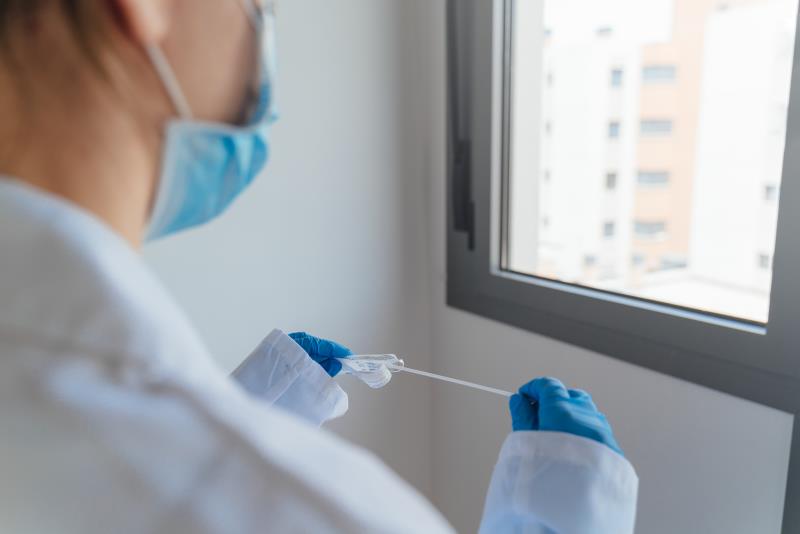COVID-19: Viral shedding highest in 1st week, potentially airborne too





COVID-19 patients appeared to be shedding virus to their surrounding the most during the first week of their illness, based on data from air and surface sampling of a hospital in Singapore.
“Surface sampling revealed that the PCR-positivity of high-touch surfaces was associated with nasopharyngeal viral loads and peaked at approximately day 4–5 of symptoms,” said the researchers co-led by Drs Ng Oon-Tek and Kalisvar Marimuthu from the National Centre for Infectious Diseases, Singapore, on behalf of the Singapore 2019 Novel Coronavirus Outbreak Research Team.
In addition, the team also found that SARS-CoV-2 PCR-positive particles as small as 1 µm in the air in two airborne infection isolation rooms (AIIRs) — raising the potential that the disease may be transmitted through airborne particles.
“Understanding the different transmission routes of SARS-CoV-2 is crucial in planning effective interventions to break the chain of transmission,” the researchers stated.
The team screened surfaces (three AIIRs in ICU and 27 in general ward) and air samples (three AIIRs in general ward) from hospital rooms housing COVID-19 patients for the presence of viral RNA by RT-PCR. [Nat Commun 2020;doi:10.1038/s41467-020-16670-2]
Among the 245 surface samples tested, viral RNA was detected in 56.7 percent of the rooms. Of the rooms tested positive, surfaces most likely to be contaminated included the floor (65 percent), air exhaust vent (60 percent), bed rail (59 percent), and bedside locker (47 percent).
In particular, the presence of surface contamination was higher during the first week of illness than after 7 days of the indexed date (p<0.001). Detection of surface contamination also appeared to be correlated with the viral load of the patients (p=0.06) — which has previously been shown to be higher during early stages of the disease.
Within the first week of illness, ten (66.7 percent) out of 15 patients gave rise to high-touch surface contamination compared with three (20 percent) patients beyond the first week of illness (p=0.01).
With disease progression and decreasing viral load, the extent of contamination on high-touch surfaces also declined.
“Extent of environmental contamination correlated with day of illness timepoint,” noted the researchers.
Nonetheless, the extent of surface contamination was not associated with symptoms present.
“The extent of environmental contamination we found in our study could be attributable to direct touch contamination by either the patient or healthcare workers after contact with infected respiratory fluids. However, contamination through respiratory droplets ... is also plausible,” suggested Ng and team.
“The concentrations of SARS-CoV-2 in the air and high-touch surfaces could be highest during the first week of COVID-19 illness,” they added.
Airborne threat?
Among the air samples collected, SARS-CoV-2 PCR-positive particles measuring >4 μm were detected in three AIIRs while particles of sizes 1–4 μm were detected in two AIIRs in the general ward, despite having 12 air changes hourly in these rooms.
“[Nonetheless,] current evidence does not seem to point to aerosolization as the key route of transmission of SARS-CoV-2, and there have been reports of healthcare workers not being infected after exposure to confirmed patients despite not using airborne precautions,” noted Ng and co-authors.
“Even though particles in this size range have the potential to linger longer in the air, more data on viability and infectiousness of the virus would be required to confirm the potential airborne spread of SARS-CoV-2,” they pointed out.
Ng and team suggested that further epidemiologic studies of the outbreak be conducted to understand the relative contribution of various transmission routes and their association with patient-level factors in healthcare and non-healthcare settings.